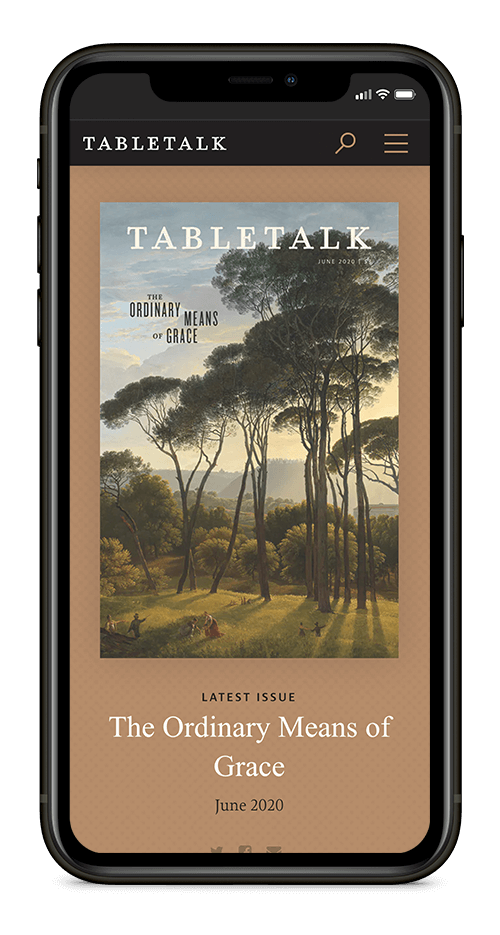
Request your free, three-month trial to Tabletalk magazine. You’ll receive the print issue monthly and gain immediate digital access to decades of archives. This trial is risk-free. No credit card required.
Try Tabletalk NowAlready receive Tabletalk magazine every month?
Verify your email address to gain unlimited access.
Revelation 7:9–10
“After this I looked, and behold, a great multitude that no one could number, from every nation, from all tribes and peoples and languages, standing before the throne and before the Lamb, clothed in white robes, with palm branches in their hands, and crying out with a loud voice, ‘Salvation belongs to our God who sits on the throne, and to the Lamb!’”
In ecclesiology, we study what Scripture tells us about the church, including the four attributes of the church stated in the Nicene Creed. Thus far, we have considered what it means for the church to be one and to be holy. Today we will look at what it means for the church to be catholic, as the creed says.
As we begin, let us note that some Protestants stumble over the word catholic in the Nicene Creed, thinking that it is a reference to the Roman Catholic Church. That is not what the creed refers to, however. The term catholic comes from the Greek word katholikos, which means “whole” or “universal.” In calling the church “catholic,” the creed affirms that Christianity is not limited to one time, place, gender, race, or socioeconomic status. The Christian faith, and consequently the church, is for all people. As Heidelberg Catechism 54 puts it: “I believe that the Son of God through his Spirit and Word, out of the entire human race, from the beginning of the world to its end, gathers, protects, and preserves for himself a community chosen for eternal life and united in true faith.”
The catholicity of the church represents something genuinely new about the new covenant. During the old covenant period, the gentile nations were not forbidden from joining the visible church, but they had to be circumcised and follow all the ceremonial and civil requirements given to the nation of Israel (e.g., see Gen. 17:9–14; Ex. 12:48–49). This kept the worship of the one true God largely limited to the ancient Israelites. Under the new covenant, however, the church is more universal, since the specific ceremonial and civil laws of the old covenant are not binding on Christian practice, even if we can learn many spiritual lessons and principles of wisdom from them (Acts 15:1–21; Gal. 2:3). Unlike the old covenant church, the new covenant church “is also catholic or universal under the gospel (not confined to one nation, as before under the law),” as Westminster Confession of Faith 25.2 puts it.
As with the other creedal attributes of the church, the catholicity of the church is both an already and a not yet reality. Currently, the church can be found on every inhabited continent, and yet not every tribe and tongue is represented in the church, for many people groups have not heard the gospel. In God’s providence, the church becomes more catholic as it sends forth men and women to make disciples of the nations (Matt. 28:18–20).
Coram Deo Living before the face of God
Because the gospel is for all people, the church is for all people. Therefore, the church must pay attention to its catholicity. We can do this by welcoming visitors to the church no matter where they come from, supporting missionaries to other nations, and seeking to engage the neighborhoods around our local churches with the gospel of Jesus Christ.
For further study
- Psalm 67
- Isaiah 66:18–21
- John 10:16
- Acts 1:8
The bible in a year
- Jeremiah 43–45
- Hebrews 4